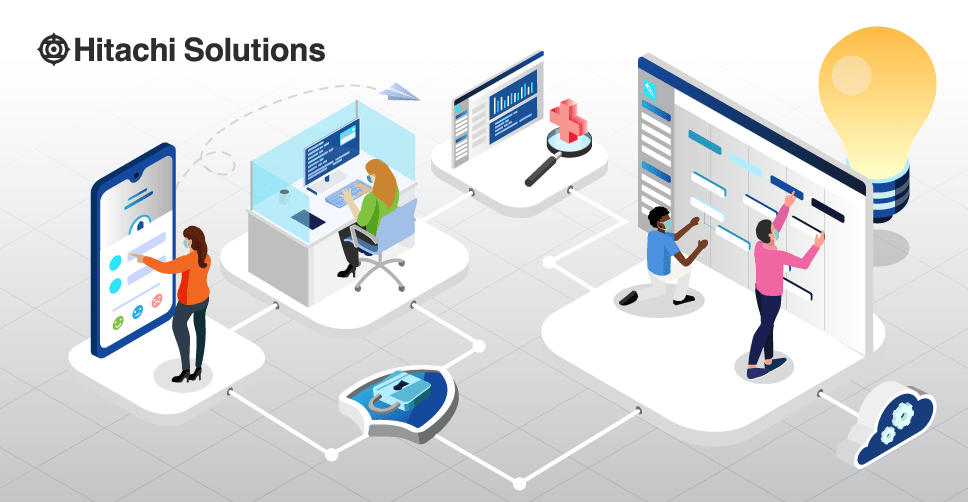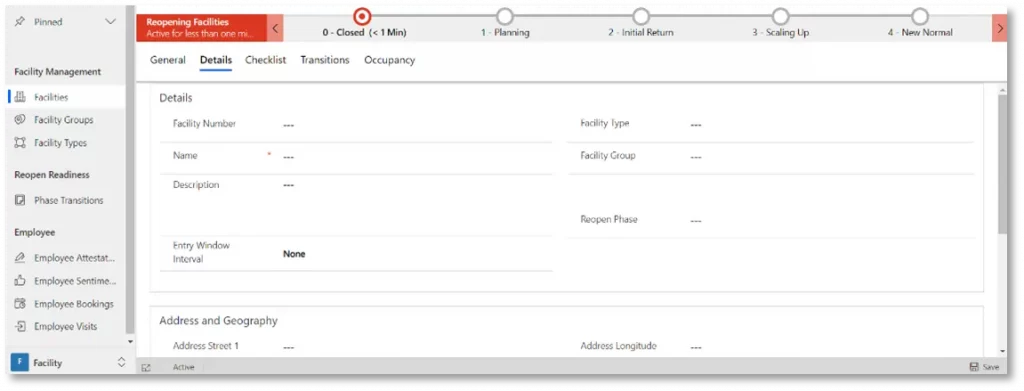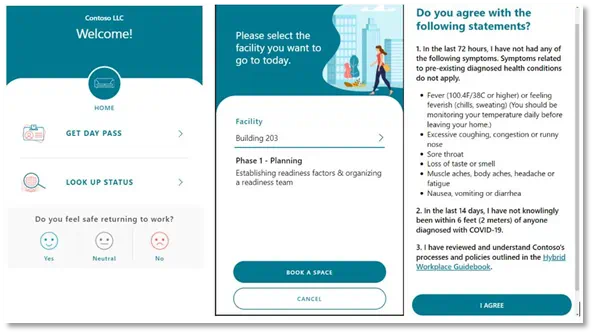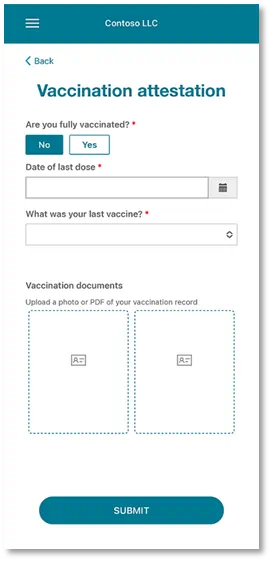

Return to Work
Reopen responsibly, monitor intelligently, protect continuously.
Download the Data SheetBy Emma D’Arcy
Moving into 2022, it appears the pandemic is going nowhere, and yet, getting back to the workplace is a high priority for many employers. But it’s a different workforce, one that is concerned about vaccination policies, social distancing, and the long-term impacts of infectious diseases on their health and safety.
With that awareness comes the need for programs and policies to address the ‘new normal’ while staying vigilant as the infection landscape and vaccine protocols change. Almost all organizations are embracing some level of digital tooling in response. The Microsoft Power Platform’s Return to the Workplace (RTW) solution is one of those technologies.
RTW is divided into four separate applications: Location Readiness, Workplace Care Management, Employee Health, and Safety Management, and Location Management. The solution allows employees to self-attest to their health and well-being, book a space, receive a day pass, and verify vaccine credentials and recent test results, all depending on a company’s specific policies. It also includes location management capabilities, so facilities personnel can monitor and control occupancy by area and reopening plans by phase.
Returning to the workplace is fundamentally about two things — locations and people. Microsoft does a good job of segregating the related tasks in componentized Power Apps. That’s really the solution’s differentiator, you can use the parts of the solution you want, and Power Apps makes the components easily customizable.
Preparing your locations
Many organizations aren’t relying solely on physical locations to work any longer. But that doesn’t mean physical places and spaces aren’t important (crucial to some companies). What it does mean is that work sites should be managed using digital tools to make informed decisions about how best to keep them open and safe, while staying policy compliant.
The location preparation and management tools in the RTW solution allow facility managers to determine the readiness of their facilities and manage safe reopening by making decisions based on critical factors like COVID-19 infection rates and supplies availability. With that information, personnel can monitor and control occupancy by specific areas of the site, for example. The app provides step-by-step instructions in an automated workflow, so it’s relatively easy to use.

Once you’ve reopened, the solution provides three Power BI dashboards: one for executive leadership, one for facility managers, and one for health and safety leaders to stay on top of the changing environment. You can publish the Power BI dashboards using the template app from AppSource once you’ve installed the applications:
- Location Readiness dashboard allows managers to determine the readiness of their facilities and manage their safe reopening by making informed data-driven decisions using critical factors like COVID-19 infection rates at the county level in the US.
- Location Management dashboard provides facility managers with tools to monitor and manage occupancy, safety procedures, vaccination and periodic testing, and safety-related best practices.
- Workplace Care Management app and dashboard gives health and safety leaders tools to reduce the risk of a workplace outbreak by managing COVID-19 cases, conducting manual contact tracing, and managing key safety and health metrics. In the illustration you can see how an employee exposure report is tracked from time of report to resolution:

Putting people first with transparency
Keeping employees safe is obviously the top priority. You may be successful in bringing employees into the office, but the real measure of success will be in making them want to stay — and thrive — in your organization. It’s about instilling trust — employees will feel confident that they can return and stay safe if they are assured that employers have a data-based solution to provide ongoing safe workplaces.
The Employee Health and Safety Management app provide this sense of assurance, with a single hub, or portal. Employees can access to the latest relevant information and use self-service tools to check into workplaces remotely, and self-screen before entering facilities.
Third parties, like maintenance and delivery personnel who need access to your facilities, can follow a similar process as employees, checking in upon invitation and self-screening before being granted a pass. Portal users can also add new guests or dependents who may need one-time access.

Vaccine Attestation
Vaccinations and periodic testing are critical components of any RTW solution. Microsoft has added functionality to manage vaccine attestations and periodic testing through the self-service portal. It’s built with workflows that can be customized depending on your business processes and can be connected to external systems if you need.

A vaccine tracker for front-line employees
Many businesses need to track vaccine and testing requirements for employees who don’t have a company-wide email address or aren’t part of an Activity Directory domain. For those organizations, Hitachi Solutions has developed a vaccine portal that isn’t dependent upon AD authentication or credentials, and thus, doesn’t require licensing for every portal user through Power Apps.
Hitachi’s vaccine portal isn’t an alternative to Microsoft’s solution but serves a different audience – for example, front-line workers like those in the hotel or restaurant business. The two portals can be used in conjunction to provide a broad solution for all employee types.
For an in-depth look at Hitachi’s vaccine tracking functionality, watch our new on-demand webinar.

Licensing basics
Microsoft’s RTW solution requires that you have at least a minimally established Power Platform in your Microsoft 365 tenant. In other words, you must have an environment into which the solution can be deployed, users must be able to access it, and you must ensure that it’s minimally managed and secured.
You’ll need:
- Power apps license, which can be either subscription-based, or pay-as-you-go. For more information, look here.
- Power BI Premium or Power BI Pro license, if you’ll be using the Power BI dashboard that’s available as part of the solution and you want to configure and publish reports.
- Power Apps can be provisioned without requiring a specific user license and can be based on usage (page views or logins per 24 hours.
You can find more information about licensing in the recently-released Power Platform licensing guide. As with all Microsoft licensing, it can be confusing. We recommend working with a partner to purchase the correct licenses at the right usage level, ensuring that you’re paying for what you plan to need and not more.
What’s right for your org
Mapping out what is right for your workforce and work locations is critical to successfully reopening, meeting compliance requirements, and positively affecting employee retention. For all those points along the road, Hitachi Solutions has the Power Platform expertise and experience to guide you successfully.
Check out our Return to the Workplace webpage for information regarding how you can partner with Hitachi Solutions to get started. We look forward to talking with you.


